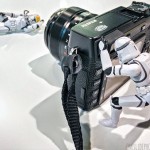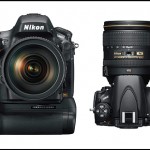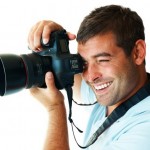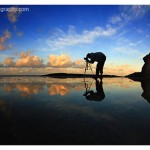
1.With a limited budget, what camera should I buy?
If you’re working with a budget of under $500, buy a pocket (point-and-shoot) camera that has Manual Settings feature. This feature will help acquaint you with Speed and Aperture.
Be confident in buying a pocket camera; because the price tag of the camera doesn’t accommodate best shooting angles. The camera also can’t show you which composition is best or give you ideas of what to shoot even if it costs $3000. The quality of the end-product is determined by the photographer.
If you’re working with a budget in the rage of $500 to $1000, try to find a prosumer DSLR with a
2.Which is better, DSLRs or Mirror-less cameras?
In terms of practicality, mirror-less digital cameras triumph. This type of camera is most useful in accompanying you on your travels because it has a light and compact body. The quality of photo is also comparable to that of a DSLR.
But to enter into the more expert world of photography, it’s generally better to choose a DSLR because the sensor in a DSLR camera is usually far larger than in a mirror-less. The bigger the sensor a camera has, the better it impacts the quality of the photograph. This is especially prominent in the areas of detail, sharpness, and the amount of noise in high ISOs. The bigger the sensor, the better the physical quality and of course the more expensive.
3.Which should I prioritize buying first, a wide lens or a telephoto lens?
When purchasing a camera, especially entry-level ones, you’ll usually get a kit lens included in the package. A kit lens (usually an 18-55 mm lens) is actually good enough to start you off in learning the ways of photography. All you have to do is optimize its use. When you have additional funds to buy an additional lens and your interest is photographing landscape, then a telephoto lens would be 2nd priority. Your next buy should be a wide lens. Telephoto lens is great for use in photographing models, sports events, or travels. Or if you want both worlds in one lens, then buy yourself an all-around lens. These usually has a range of focal lengths of between 18-200 mm or 18-135 mm. The disadvantage would be that an all-around lens’s wide isn’t very wide, and the aperture decreases the more telephoto it gets.
4.Which lens is better, wide or telephoto lens?
Wide and telephoto lenses have their own distinct functions and advantages. One is for photographing in a wide perspective while the other is to zoom in on a desired object. If you have sufficient funds, buy both.
But if you’re on a limited budget, I suggest you buy a wide lens first. A wide lens comes in a variation of 16 mm, 17 mm, 20 mm, 24 mm, and 28 mm. For daily use, a wide lens will be more useful. For instance, they’re great for photographing children parties, weddings, or self portraits.
If your funds isn’t enough for a wide lens, you can maximize the use of your kit lens. You can also save some money and buy a normal lens with large apertures. A normal lens is a 50 mm lens, and the cheapest one is quite affordable. They’re called “normal” lenses because they don’t cause any distortion to the photograph and is similar to the point of view of a human eye.
5.Which filter should I have when I start out in photography?
Filters are divided into two important functions. First, a filter works as a protector of your lens glass. Second, a filter is used to create a certain special effect to the photograph. When it comes to filters, you should prioritize yourself in having a filter that protects. These are called UV filters. The actual function of this filter is to, well, filter out UV light that can make your photos hazy. But usually this isn’t significantly noticeable. A more important function of this filter is to protect the outer layer of your lens. After that, the next filter you should invest in is the CPL filter. Details on this type of filter can be read in my previous article.
6.Is it better to take a photography class or learn it on my own?
If you have the funds, why not take a photography class. Because in a photography class, you’ll build your understanding of photography systematically and in an organized structure of a classroom syllabus.
If you’re reluctant about enrolling yourself in a photography class, try to learn it by yourself at home. Learn diligently, consistently, and never be satisfied. Joining a photography club to share info about photography is also a great idea and can greatly help your journey through the rabbit hole of the world of photography. The more you photograph, the more experience and knowledge you’ll obtain. There’s always something to learn from all the failures and success in your photograph shots.
7.Do I need to take a photography software class?
It’s better to further your knowledge in photographing first before you delve into photography editing softwares. But once you feel like you’ve gotten the hang of everything, then the next possible step is to acquaint yourself with photography software.
A well-set knowledge in photography is needed first and foremost so you won’t rely too much on editing software. Also have your ideas, concepts, and execution set first. A bad photo will still be a bad photo even if it’s been edited through the most sophisticated expensive editing software. But a good photo can be perfected using a bit of digital processing.
In fact, digital processing has now becomes its own profession. It’s quite probable that one day the world of digital processing separates itself from the world of photography. If that time comes, you’ll have to choose between the side of photography or the side of digital processing.
Also, check out my other article: Beginner’s FAQ part 1.



